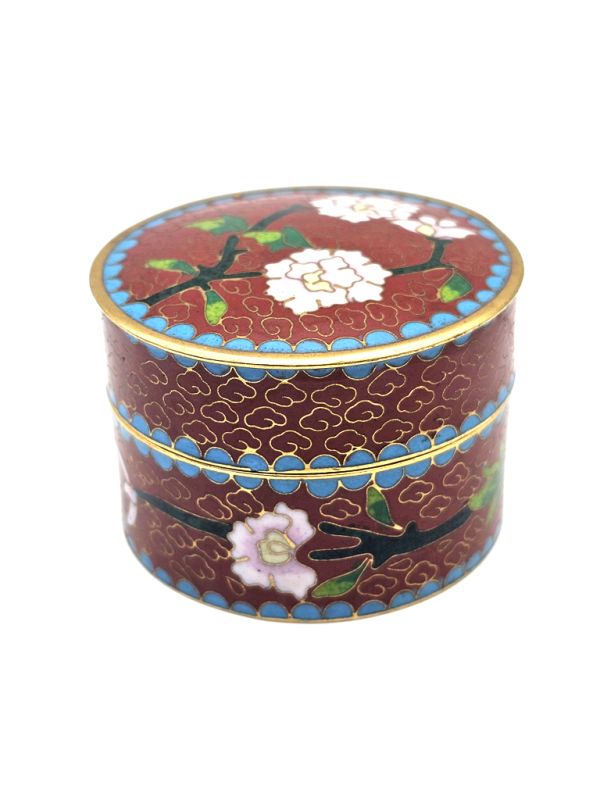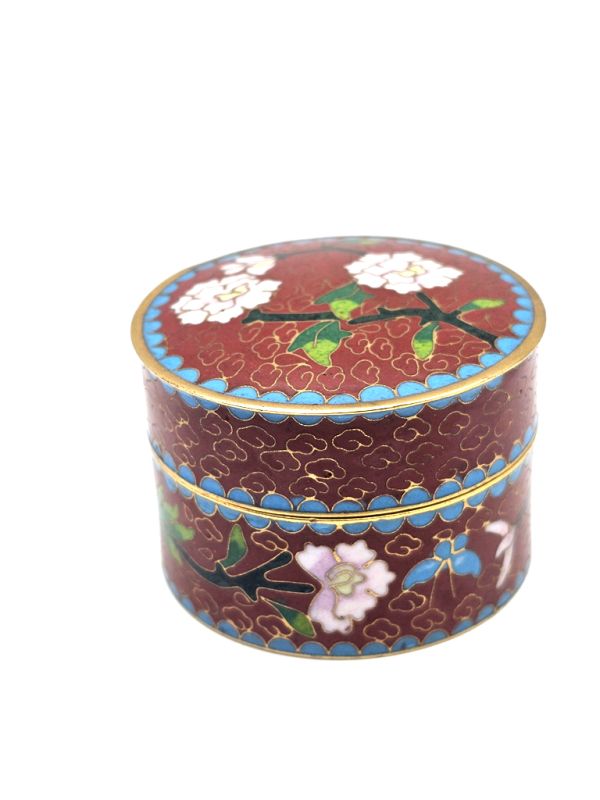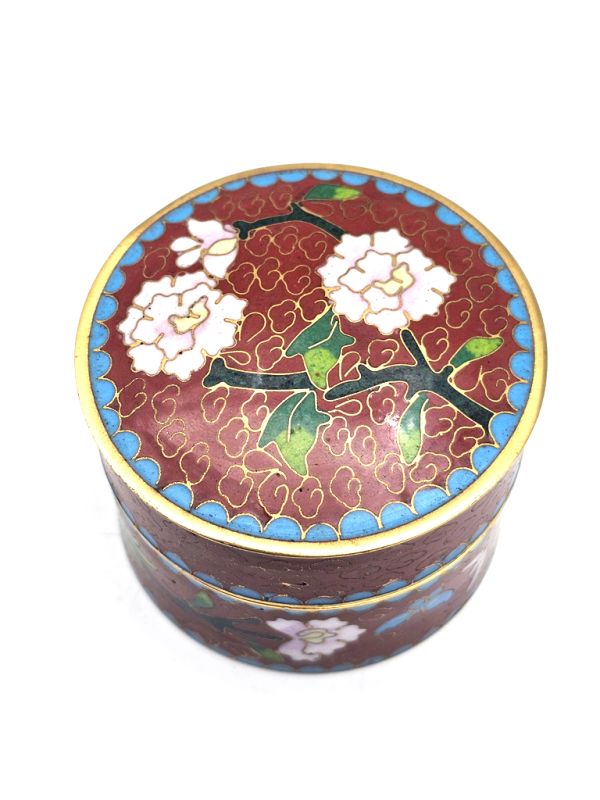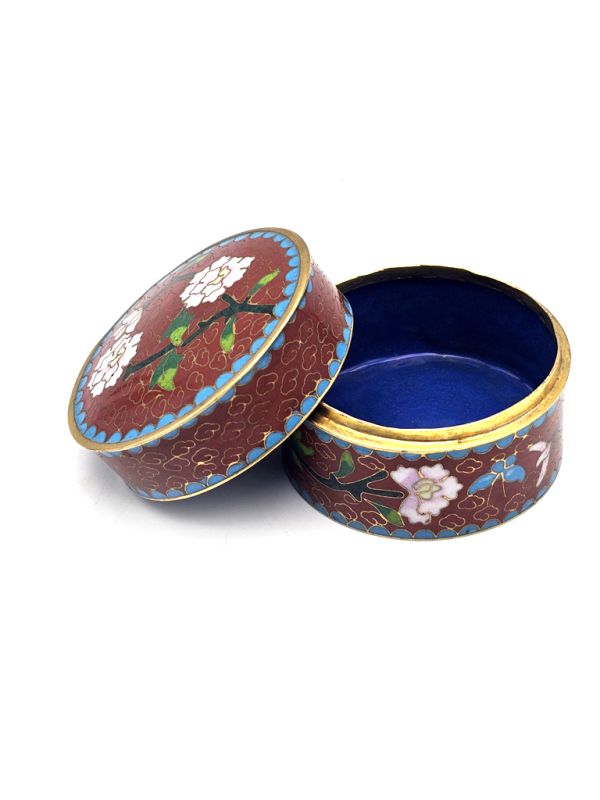Chinese Cloisonné: Craftsmanship and Tradition - Brown box - Flowers
Chinese Cloisonné Vases: Splendors of Art and Tradition
Chinese cloisonné vases are jewels of craftsmanship, representing the excellence of Chinese know-how. These magnificent objects combine aesthetic beauty and technical complexity, making them highly sought after by collectors and art enthusiasts.
A Brief History of Cloisonné in China
Cloisonné, or "Jingtai Lan" in Chinese, takes its name from the Jingtai period of the Ming dynasty (1450-1456), although the technique appeared in China long before that time. Primarily used for decorating religious objects, vases, and luxury items, cloisonné has become a symbol of refinement and high social status.
Techniques for Making Cloisonné Vases
The making of cloisonné vases is a meticulous and complex process involving several key steps:
Design and Preparation: The process begins with designing the pattern to be applied to the vase. An artisan first draws a detailed model, taking into account the curves and specific dimensions of the vase.
Making the Copper Structure: The base of the vase is made of copper. This material is chosen for its malleability and ability to withstand high temperatures. The vase is formed by hammering or molding to achieve the desired shape.
Applying the Cloisons: Fine strips of copper are then bent and soldered onto the surface of the vase to create compartments or "cloisons." These cloisons form the outline of the decorative patterns and are fixed in place with a special paste. This step requires great precision to ensure the motifs are perfectly aligned and balanced.
Enameling: Once the cloisons are in place, the compartments are filled with colored enamel. Enamel is a colored glass paste that, once melted, produces a shiny and translucent surface. The vases are usually enameled several times to achieve rich and deep colors.
Firing: The vase is then fired in a kiln at temperatures ranging from 800 to 900 degrees Celsius. This firing melts the enamel, which spreads and sets into the copper cloisons. The vase is often fired and enameled several times to achieve the desired thickness and brilliance.
Sanding and Polishing: After the final firing, the vase is sanded to smooth the surface and remove any excess enamel. It is then polished to achieve a shiny and uniform finish. This step highlights the detailed motifs and the vibrant colors of the cloisonné.
Finishing: The exposed metal parts of the vase, such as the copper cloisons, are often gilded or silvered to add a final touch of luxury and refinement.
The Beauty and Significance of Cloisonné Vases
Cloisonné vases are not just decorative objects; they are testimonies to Chinese history and culture. Each vase tells a story through its intricate motifs and vibrant colors. Common themes include flowers, birds, dragons, and landscapes, each symbolizing different aspects of life and Chinese beliefs.
We offer you an exceptional collection of Chinese cloisonné vases, handmade using traditional methods. Each piece is unique, reflecting the talent and dedication of Chinese artisans. Explore our collection to discover these treasures of art and culture, and let yourself be captivated by the timeless elegance of cloisonné. For any questions or specific requests, please do not hesitate to contact us. We are here to help you find the perfect piece to enrich your collection or beautify your interior.
















